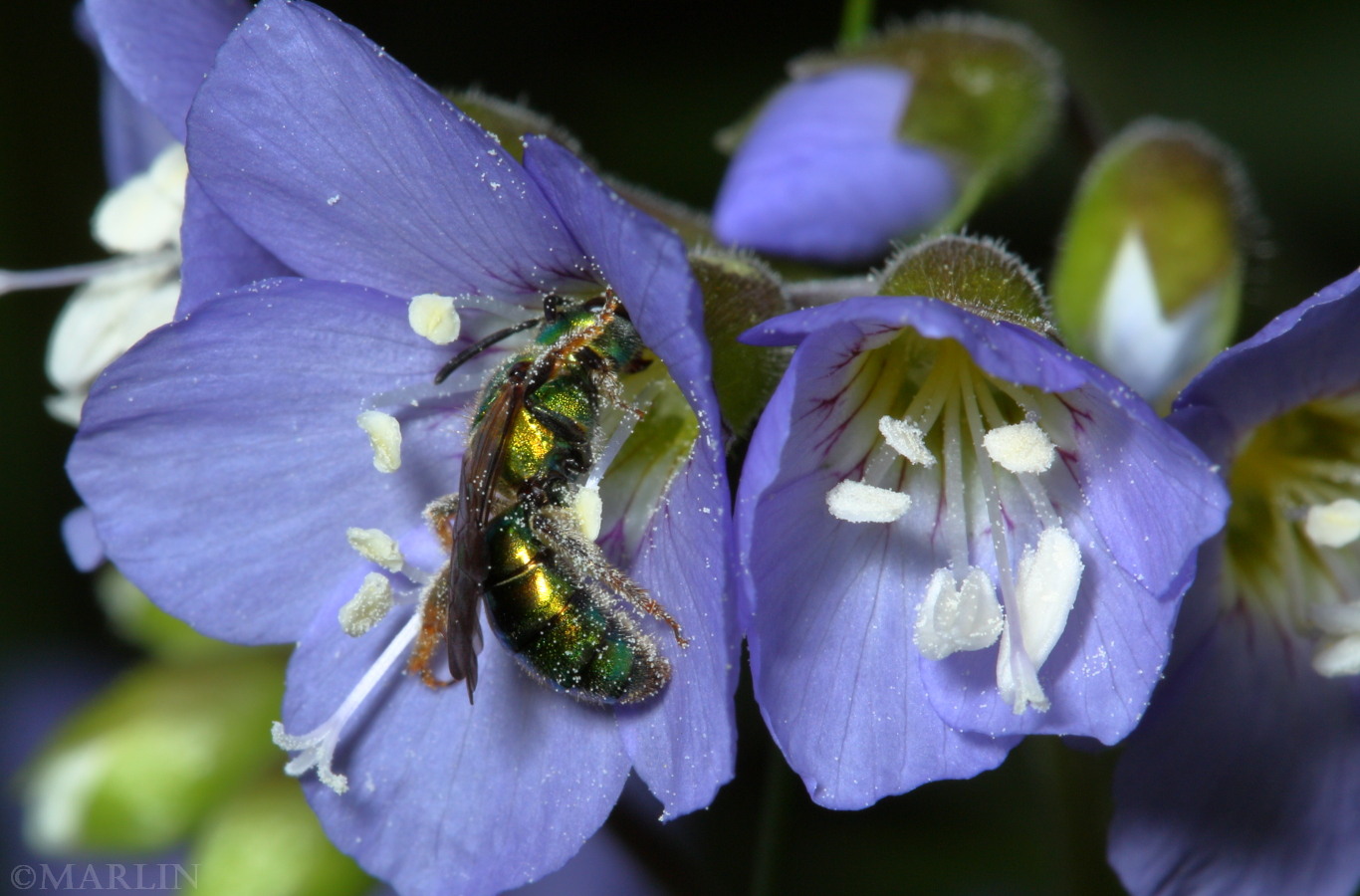Halictid Bee – Halictus legatus
With 4500 species, family Halictidae is the 2nd largest family of bees after Apidae, with over 6000 species extant. The family is thought to have been around for ~90 million years, appearing in amber (fossilized tree resin) found in various parts of the world.
I have been chasing these charming creatures for nearly 30 years, and their habits, chief of which is their habit of assuming the “fetal” position while foraging – their abdomen is almost always curled underneath- can present a very challenging experience for the macro-photographer. Coupled with the female’s frenetic movement amongst the flowers while foraging for pollen and nectar, they can provide a real workout.
This female specimen was captured in action at Oregon, Illinois in mid-April. These gals get to work early in the year, taking advantage of spring ephemeral flowers. Their small size allows them to get inside even the tiniest of flowers.
Native bees provide pollination services to many plants, and have become even more valuable as nature besets our much-beloved honey bees with fungi infections, and mites, and that wacky thing where foraging bees go out in the field and then just sit – lost in a lost world they forget where the hive is. Colony collapse disorder.
Most halictids nest underground or dig tunnels in wood. I have never been fortunate enough to find any of their nest sites, although I have encountered bumblebees thus engaged, along with various ground-dwelling hornets, cicada-killer wasps (and ants, of course).

Look at all that lovely pollen! I cannot fathom what it’s like to be one of these creatures, to fly about in such shimmering livery, and to find good food just right out in the open, offered up an a silver platter so to speak. It’s one thing to watch them with the naked eye, but quite another to have a close up view of those amazing structures, and actually get a better idea of the wonder and beauty of their world. Ah, but I am anthropomorphizing; they are probably sick and tired of feeding the kids and laying eggs maybe? Or do they not notice anything at all? What do you think?
Thank you for visiting our site. We hope you enjoy our pictures!
Insects & Spiders | Bees & Wasps Index | Bees & Wasps Main | Beetles Index


